

LEARNING FUTURES PROJECT IMAGINING
HIGHER EDUCATION IN 2025
The global pandemic of 2020 created exceptionally difficult circumstances for those in higher education impacting teaching and learning, research activity, campus community, financing and infrastructure, and an important rite of passage for so many young adults.
Perkins Eastman invited a diverse body of experts to share insights into the fundamental questions facing higher education in this moment. Over countless hours these past 10 months, this team gathered to reflect on this moment and envision what comes next. The Learning Futures Project details the findings from these conversations. Together with Perkins Eastman’s The Conversation I & II, these publications complete an arc of taking readers from reacting to the current dilemma, through necessary adaptation, to envisioning how institutions will thrive in 2025.
Growth often follows adversarial times. The honored American higher education model, cultivating millions of students and forging new frontiers of research, navigated slow and methodical change since its inception in the mid1600s. Following WWII, population and economic growth (combined with the GI Bill) put new demands on formal higher education, spawning thousands of new institutions from the foundation of this traditional model. Although criticized for its pace of change by the general public, private companies, and various political figures; the model has been immune to many of the difficulties faced by private industry, and has been unwavering in its dedication to serve as an engine for education and discovery. However, recent years have shown instability in enrollments, and public institutions have experienced steep reductions in state and federal funding. Coupled with the strain of the pandemic, higher education professionals in all sectors are facing a pivot towards an updated
education model that is sustainable, equitable, diverse, and more holistic.
The Learning Futures Project provides a vision for what learning could look like beyond this pivot: Hybridized models where undergraduate curriculum, graduate programs, and professional skills excel with remote and online learning while taking advantage of a central campus reimagined with spaces for innovation, collaboration, cocurricular learning, and community building. A faculty built on interdisciplinary research that welcomes undergraduate students and professional partnerships. A holistic administrative approach where the lines between academic and student affairs are removed and an integrated student support system flourishes. Invisible, yet at the core of these functionalities, is a robust suite of behavioral and technological tools empowering all of us, facing new adversities, to move from reacting to leading and from surviving to thriving.
We invite all within the higher education community, and those who serve it, to be inspired by The Learning Futures Project and apply its insights to your areas of expertise at your institutions.
Onward!
Parke Rhoads & James Ford

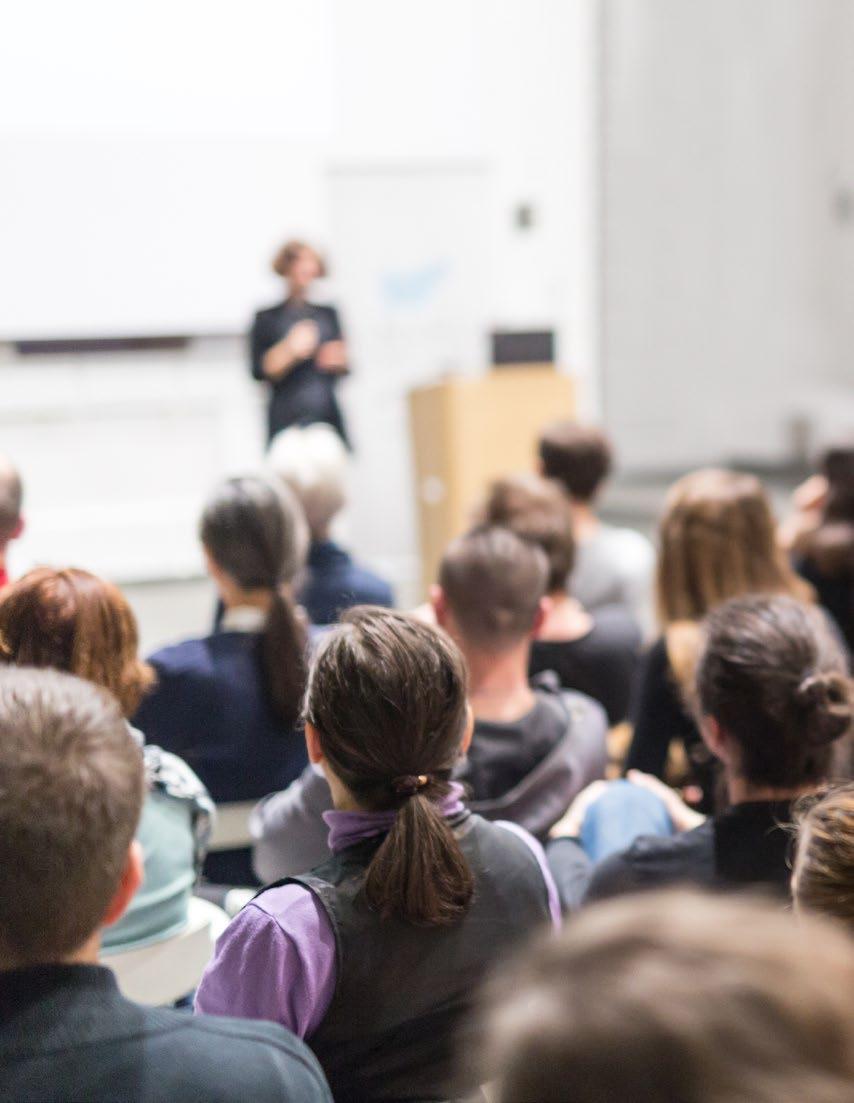

MEET OUR
Perkins Eastman convened an expert panel from different academic backgrounds, disciplines, localities, and positions in a series of conversations focused on the future of higher education. The group’s multidisciplinary expertise and diverse viewpoints enriched discussions as the participants considered the future of higher education in the year 2025.




Carisima Koenig AIA
Visiting Assistant Professor, Pratt Institute; Principal & Associate Higher Education Practice Leader, Perkins Eastman
Carisima Koenig is an architect as well as a faculty member of the Graduate Architecture and Urban Design program at Pratt Institute where she has taught since 2005. Carisima is currently a Visiting Assistant Professor of Professional Practice where she examines the dynamic relationships that test the profession and its process of development. In addition to her work in academia, Carisima is a Principal, Education Practice Leader, and member of the Women’s Forum at Perkins Eastman. She is co-chair of the AIANY Professional Practice Committee, serves as a Board member for a community-based school in Brooklyn, NY and most recently has been appointed to the Advisory Board of Madame Architect. As both a practitioner and educator, Carisima is interested in designing environments that foster educational pursuits. Her current research explores academic environments and neurodiversity.
Charles Lang EdD
Visiting Assistant Professor, Teacher’s College
Columbia University
Charles Lang is Visiting Assistant Professor of Learning Analytics. His research interests center on the use of big data in education, personalization algorithms, and teacher data literacy. Dr. Lang was previously a Postdoctoral Associate in Learning Analytics at Steinhardt School of Education, Culture & Human Development, at NYU and received his Doctorate in Human Development and Education from the Harvard Graduate School of Education where he also taught Data Science in Education. He received his Bachelor of Science in biochemistry and Bachelor of Arts in political science from the University of Melbourne.
Chris Shaffer MS, AHIP
University Librarian and Assistant Vice Chancellor, UCSF
Chris Shaffer is University Librarian, Assistant Vice Chancellor for Academic Information Management, and Adjunct Professor, Department of Medicine, at the University of California, San Francisco. Leading the Library and academic technology at UCSF, he recently chaired an Educational Space Programming Task Force to develop a holistic ten-year campus plan. Chris is President of the Association of Academic Health Sciences Libraries, Distinguished Member of the Academy of Health Information Professionals, and former Board Member of the Medical Library Association. He holds a BA in Philosophy from Texas A&M University and an MS in Information Science from the University of North Texas.
Colleen Countryman PhD
Assistant Professor of Physics, Ithaca College
Colleen Countryman is an Assistant Professor in Physics at Ithaca College. She graduated with her PhD in Physics, specializing in Physics Education Research, from North Carolina State University in 2015. She obtained a Masters in Applied Mathematics from Virginia Polytechnic Institute (2010) as well as a BA in Mathematics and a BS in Physics from Canisius College (2008). Dr. Countryman researches the development and assessment of educational technologies. At Ithaca College, Colleen teaches a variety of introductory and advanced physics courses in active learning formats.
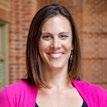


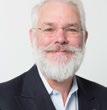


Erica Woekel PhD
Clinical Assistant Professor and Director of the Lifetime Fitness for Health Program, Oregon State University
Dr. Erica Woekel is a Clinical Associate Professor and the Director of the Lifetime Fitness for Health (LFH) Program at Oregon State University. She teaches about 3,000 undergraduate students and supervises over 20 graduate students in the College of Public Health and Human Sciences each year and is an early adopter to educational initiatives and technology within the classroom. Dr. Woekel’s research and teaching interests focus on psychosocial aspects for promoting healthy behavior change in physical activity, nutrition, and mental health. She emphasizes practical strategies to impact healthful habits across the lifespan while particularly working with individuals during major life transitions primarily college-age individuals and during motherhood.
Evie Klein MPhil, MArch
Doctoral Candidate, Graduate Center, CUNY Visiting Instructor, Pratt Institute
Evie Klein is an architect and planner with expertise in the social and psychological impact of built environments in higher education and cultural institutions. She is an Environmental Psychology doctoral candidate at the Graduate Center (CUNY), where she co-founded the User Design Information Group. Her research focuses on how the social sciences can contribute to design processes. She currently teaches at Pratt Institute. She is co-founder of the Social Science + Architecture Committee, AIANY. She serves on AIA National’s Research Sub-committee of the Committee on Architecture for Education. Previously, she was AVP of Strategic Assessment, Planning & Design at NYU.
James K. Ford PhD
Chief of Staff, Division of Academic Planning, UC Berkeley
James K. Ford, PhD, is Chief of Staff of the Division of Academic Planning at the University of California, Berkeley where he leads teams devoted to campus space planning, excellence in academic programs, and global engagement. Previous to UC Berkeley, Dr. Ford served as the Director of Summer Sessions at UC Santa Barbara where he led efforts in academic program creation, strategic enrollment management, and innovative course design. Prior to his administrative work, Dr. Ford’s research focused on immersive learning environments, specifically the impacts of augmented reality on teaching and learning in higher education.
Kimo Griggs
Associate Professor and Associate Dean, University of Washington, Seattle
Kimo Griggs is an architect and fabricator. As a fabricator he is entranced by tools, their use, the opportunities they suggest, and their implications. As an architect he is interested in design at all scales, but most especially those of the eye and hand. He teaches building and furniture-design studios and workshop-based courses in materials and making, especially digital design and manufacturing technologies. A member of the UW faculty since 2009, Kimo taught previously at Yale School of Architecture, the Harvard Graduate School of Design, Columbia University School of Architecture Planning and Preservation, and Carnegie Mellon University.
Parke Rhoads
Principal, Vantage Technology Consulting Group
Parke Rhoads is an academic technologist, consulting on the design of learning environments and the innovative organizations that create them. In his role as Principal and Higher Education practice leader for Vantage Technology Consulting Group, Parke draws from a wide variety of past experiences, including: Athlete, Saucier, Paramedic, Physics Professor, Acoustician, and the Chief Technology Architect of the United Nations. Parke’s professional interests include STEAM curriculum development, technology systems, human-centric design, organizational behavior, and futurism/ innovation planning.
Sam Catherine Johnston EdD
Director of Postsecondary & Workforce Development, CAST Universal Design for Learning
As Director of Postsecondary & Workforce Development, Sam Catherine Johnston provides thought and operational leadership in CAST’s workforce/postsecondary opportunities. Dr. Johnston’s primary research focus is on social learning processes and the use of online and blended learning to support peer-to-peer knowledge transfer. She has conducted design-based research in the fields of mental health care, human services, criminal justice, and education in order to find out what various workforces need to continue to learn when engaging in personally and professionally challenging work. Dr. Johnston serves on multiple advisory boards and has delivered workshops and keynotes nationally and internationally on UDL in postsecondary and workforce settings.
WHAT DOES LEARNING LOOK LIKE
With 2020’s pandemic, economic turbulence, social justice movement, and the American election in the front of our minds, higher education has been impacted from all sides. The situation is unprecedented. However, there is every reason to believe there is some type of clearing on the other side. Now is the time to start envisioning, planning, and preparing for that future.
Long before COVID-19, critics of the modern American university noted it was overpriced, unresponsive, and perhaps out of date, leaving it ripe for disruption. As countless other industries like journalism, media, and finance were forced to make major structural changes, these critics charged that it was only a matter of time before the “old school” American university would be subject to the same forces. From declining enrollment to declarations of the “death of the degree” it has become a bit of a sport among the public to “armchair quarterback” the decisions of Deans and Provosts.1
Nonetheless, an interesting phenomenon keeps occurring for most American colleges and universities on their way to a prophesied apocalypse… they continue to flourish.
While the impact of COVID-19 means most colleges and universities are under an intense set of challenges, of the 4,000+ colleges and universities in the United States, the vast majority will still be physically and virtually welcoming students in 2025.
“The education system is very resilient to being changed.”
CHARLES LANG
Such persistence, however, should not be confused with the notion that 2025 will be business as usual. Higher education, much like society, faces epochal challenges which COVID-19 has only accelerated.
Humans Re-learning to be Human
If COVID-19 has taught higher education anything, it is that institutions can actually be nimble with technological tools when they absolutely must, and that they can do a lot remotely. But technology also isn’t a panacea it doesn’t negate the need, desire, and benefit for people to come together. Countless studies across numerous industries have confirmed one consistent theme in 2020 we are a social species that needs to work, learn, celebrate, protest, and play together. Seeing what we have this year, and knowing that many studies point to universities existing as critical places for students to learn how to share, collaborate, experiment, and connect with other humans might we re-envision pedagogy and place based on what we’ve learned?
The Dilemma of Technology
Even before the great disruption from COVID-19 in March 2020, society was becoming much more aware of the tense relationship it had with technology. With so much of society’s activities
tracked and digitized, many were (and continue to be) concerned that big data analytics and artificial intelligence are being left to sort and decipher patterns amongst massive volumes of information without appropriate oversight. The ability to harness such data is what drives many of the most promising academic computational learning and discovery platforms. Capable of things no human mind or community of people could do alone, technology will continue to impact society. In the absence of a strong social contract, however, it could heedlessly shape society. Recent years have taught us that technology requires vigilant humans to monitor it. If we critically examine the role of technology in learning might we be less inclined to see it as the source of so many easy solutions?
An Even Flatter Ad Hoc Society
Many segments of the modern workforce have become increasingly informal and less-hierarchical. This manifests in flatter team structures, greater inter-generational collaboration, and more direct communication styles. It also inverts traditional, hierarchical relationships with digital-native students having greater familiarity with modern technologies. The integration of social media and its ability to sustain global interpersonal connections allows
younger cohorts to create immediate, ad hoc knowledge networks a breadth of connections that used to take a fully-developed career to acquire. At the same time, the independent worker-based “gig economy” has left this same generation with a deep suspicion of many institutions: corporate, governmental, and academic. If higher education is to help rebuild trust in community and institutions what does that interaction and relationship look like?
The Rise of Globalized Higher Education
Geopolitics are never static, nor is academia. The end of the Cold War, the global spread of the Internet, and the sheer number of international students drawn to the United States’ freedoms and workforce have long contributed to American higher education’s unassailable global position. However, static or declining public funding for education in the US and recent attacks on immigration norms in the United States have exposed some vulnerabilities of American higher education. If faced with a landscape where attracting the world’s best talent is no longer guaranteed, can American higher education continue to position itself as an indispensable global aspiration?
1. EXPAND REACH TO EXPAND EQUITY
2. TEACH PROFESSIONAL SKILLS HOLISTICALLY
3. ELEVATE LIFE SKILLS
Plan for the Future of Learning
2020 has proven to be a remarkable social experiment. This experiment has served to highlight the distinction between the immediate challenges of the day and the enduring purpose of higher education.
“While COVID-19 isn’t the only crisis we are facing, the disruption it caused is making us see things that we otherwise wouldn’t have seen. It’s an opportunity to see where the cracks are.”
EVIE KLEIN
Before 2020, American higher education was in the midst of an ongoing shift toward a pedagogy of experience, inclusion, and support. This included challenges of the day such as outmoded classrooms, inequitable admissions, wealth masquerading as meritocracy, and a lack of faculty diversity.
To better understand the impact of existing challenges colliding with the harsh realities emphasized during COVID-19 pandemic, Perkins Eastman engaged a multi-disciplinary panel of experts in a series of digitally-mediated conversations and round-table discussions spanning several months in 2020.
Our panelists, each with their own unique perspective, collaborated over numerous months
4. BUILD LIFELONG NETWORKS
5. CAMPUS AS THE ESSENTIAL ECOSYSTEM
debating and discussing this investigation. They were charged with the goal of positing possible futures and imagining the opportunities and threats for higher education found in those futures. The focus was on a not-so-distant 2025. Themes that emerged from the panelist discussions were further contemplated and explored by Perkins Eastman and summarized below. Both beguilingly familiar and bracingly fresh, these topics speak to key questions colleges and universities must face in 2025.
1. EXPAND REACH TO EXPAND EQUITY
Higher education in the United States is considered a mature and stable market. But should it be? There are huge populations for whom higher education still feels financially and/or culturally inaccessible. To address this, institutions can jettison exclusive admissions standards, conscientiously connect to marginalized populations, or open new markets by delivering corporate continuing education opportunities abound. These new markets bring to bear with them America’s full diversity in race, age, religion, region, and socio-economics. Incorporating this diverse mix of students into higher education can create better outcomes for all, but will require institutions to navigate numerous financial and social challenges.
2. TEACH PROFESSIONAL SKILLS HOLISTICALLY
Many prospective students have been in thrall to guaranteed job prospects upon graduation. In response, American colleges and universities
have obliged with ever-more vocationally and professionally-focused programs. Yet content mastery is only part of being prepared for the workforce, and must be synthesized with other types of learning with long-term value, such as the liberal arts, interdisciplinary collaboration, and civics. Teaching professional skills holistically means placing value on teamwork, leadership, and communication just as much as the technical expertise associated with a specific discipline.
3. ELEVATE LIFE SKILLS
Similar to how the priority given to professional skills must be examined, so too must the ways in which the higher education experience builds life skills, such as collaboration, communication, and self-care the skills needed to serve as an effective citizen in society. An exciting possibility discussed by our panelists was the convergence of Academic Affairs and Student Affairs into a single holistic platform for supporting all aspects of the student experience. Other possible opportunities include a more robustly integrated peer-to-peer student mentoring approach to augment the faculty teaching load, while also teaching soon-to-be graduates valuable life and leadership skills.
4. BUILD LIFELONG NETWORKS
The social and professional bonds forged in a traditional four-year college can be the most durable connections a person forms. Much of this is due to the students sharing a journey from adolescence into adulthood. While portions of higher education help support students in this, it is not always articulated as an institutional imperative. Creating intentional class cohorts can lead to better student persistence and educational outcomes, while also serving as the genesis of lifelong bonds. This further creates a secondary opportunity for more engaged cohorts of alumni that continually return to their alma mater to reinvest resources and refresh connections.
“The point of college is for a… student [to come in] and... have conversations. It’s about understanding what someone else thinks, testing it against what you think, and then evolving out of that.”
CARISIMA KOENIG
5. CAMPUS AS THE ESSENTIAL ECOSYSTEM
Throughout 2020, the desire to return to campus and the college community has been profound. The power of place to convene people at a remove from the distractions of everyday life has signaled the essentialness of the campus. The ability to return to the in-person campus experience has also proven to be one of students’ greatest decision-points regarding the cost of higher education. In-person campus experiences remain invaluable as they provide faculty with a full-range of impactful pedagogies that allow students to grapple with content together. They also provide equitable access to resources the equipment, labs, and machinery necessary for learning and research. This experience is also one of the strongest differentiators between brick-and-mortar institutions and purely virtual ones, for which students are likely to have lower affinities. While the colleges and universities of 2025 may continue to leverage the power of networks forged amidst the pandemic, the facilities they have will need to function even more effectively as hubs for effective and impactful human connection.


EXPAND REACH TO EXPAND EQUITY
EXPAND REACH TO EXPAND Snapshot
From rethinking admissions approaches, to meeting marginalized populations where they are, to opening new markets by delivering continuing workforce training and life-long education opportunities to expand higher education to better reflect our population abound.
Expand Higher Ed Demographics
WHAT WE KNEW
The higher education market is mature, or even a slightly declining market.
WHAT’S HELD TRUE
The education sector can do a better job connecting with underrepresented populations to improve access, outcomes, diversity, and equity.
WHAT WE NEED TO DO
Continue to jettison restrictive standards, include the marginalized, and meet urban and rural students where they are.
OPPORTUNITIES VS. RISKS
Expanding the market for higher education will bring needed energy and diversity, but finding the balance between mission and financial stability will present a challenge.
American colleges and universities currently compete in a mature and stable national market.
Between 2000 and 2018, the US National Center for Education Statistic’s showed the “immediate college enrollment rate” has gone up from just over 60%, to almost 70%.2 While there are many ways to define “market maturity” and saturation, there are areas for growth.
Despite past progress, significant pockets of untapped populations still exist, but many of these are arguably the most challenging types of potential students to bring into higher education as it currently exists. They are often marginalized, in isolated urban or rural communities, and may not have completed high school (both New York City and Los Angeles, for instance, generally achieve a ~77% graduation rate).3 Some of the high school non-completers may have run afoul of the criminal justice system, and may find themselves unofficially locked out of both higher education and large sectors of the economy.
The diversity of higher education institutions, from online, to community colleges, to 4-year liberal arts schools, to the comprehensive research universities, allows various institutions to differently target distinct populations in order to expand access, upward economic mobility, and citizenry.
Furthermore, the students of 2025 (today’s eighth-graders) will reflect the values of the most racially-diverse generation in American history. Diversity will be de rigueur, and institutions that fail to reflect this in their student bodies and faculties will likely suffer. The meaning of “diversity,” however, may continue to evolve. In 2020 this has principally referred to people of color, LGBTQIA+, people with disabilities, and religious groups. There is much needed attention on these populations and how institutions can
provide them the access and support to be successful, we ask can the definition of diversity go farther? What might it mean when considering America’s political and cultural divisions?
Jettison Risk-Adverse Admissions
College admissions is as much an art as a science, and this can lead to unintended consequences for even the best intentioned. Two typical culprits:
• “Risk-adverse” admissions models: Our panel noted that many admissions processes tend to favor students that are “most likely to succeed.” This manifests in admitted cohorts that are less diverse than society because they are drawing children from the already successful segments of society.
• Standardized tests: Now understood to be closely associated with wealth and the ability to take advantage of test-prep courses, standardized tests are woefully inadequate at identifying student potential.
“There’s real potential, if things are done right, to get access to talented people in our higher education system that aren’t accessing it currently.”
SAM CATHERINE JOHNSTON
Overcoming risk-adverse admissions requires new evaluation processes to evolve from a focus on proven credentials, to instead finding ways to identify untapped potential in an applicant who

could thrive if given the proper environment and support. Indeed, our panelists imagined a broad range of student-types who have the ability and motivation to attend college, but have historically been denied access, such as populations which have been underrepresented, individuals working full-time jobs, and those exiting the criminal justice system.
Use Tech to Reach New Students
Drawing from the lessons of 2020, remote learning has been demonstrated as a viable approach. But 2020 has also laid bare how much work is required to do it right. The technologies that have been used in the pandemic have been adapted from other sectors, and they haven’t so much transformed education as allowed it to continue.
For a myriad of reasons, telehealth, remote work, and other forms of virtual interaction may be proving more effective than remote learning for higher education. But this may be a false comparison. For instance, first-year students undergo similar acculturation issues as can be seen in other industries (such as with onboarding new hires in workplace settings), but these students can be without robust adult life skills or effective support networks. Given that higher education is attempting to impart these skills and networks, its pedagogical approaches are uniquely complicated and rely upon strong student-to-student and student-to-faculty relationships that are often difficult to establish over virtual communication platforms.
While most institutions now recognize that they need to bolster their online offerings in some fashion, fundamental questions remain regarding: for what purpose, for whom, and how? Despite all of technology’s failings in 2020, remote learning is still a powerful tool that will continue to evolve and increase in effectiveness.
“Every person who teaches, even if they’re doing similar activities in similar spaces, is going to need different technology and different sorts of support.”
KIMO GRIGGS
While it is plausible that most institutions in 2025 may feature effective online learning platforms, the nature of these platforms is an open question. How much online content will be self-developed by institutions and faculty? How much will be purchased from publishers and ed-tech developers? Right now a mix of the two exists, but is this sustainable? From Microsoft’s Office products, to Google in search, to Facebook in social media the last two decades are proof of technology’s powerful market concentrating abilities. Will one ed-tech developer break out in the market space and come to dominate it?
And, even though remote learning will augment hybrid pedagogies and offer on-campus students flexibility, will it ever really be a defining feature for most of today’s brick-and-mortar institutions?
Excluding ed-tech, a few institutions might eventually be the breakout successes of remote learning and help shape and consolidate the space. These organizations may come in a few flavors:
• Major existing online providers such as Arizona State, Southern New Hampshire University, and the University of Maryland
Global Campus may continue with complete control over the end-to-end learning by developing ever-more sophisticated online experiences (and go head-to-head with some ed-tech developers).
• Other providers could more closely resemble “bundlers,” packaging content from several institutions into a cohesive program and sharing revenue back to the contentdevelopers.

• A hybrid model could also emerge, mainly remote learning augmented by limited, but impactful, in-person experiences at partner brick-and-mortar institutions.
While online universities can hypothetically bring learning to far-flung rural regions, such access can be undermined by poor broadband access and/or poverty, in both rural and urban areas, that precludes quality WiFi and computer hardware. Similarly, students in urban areas may suffer from the lack of private spaces in which to hold their classes.
Corporate Training Takeover
The corporate world has taken on new responsibilities over the last two decades in creating and delivering robust internal training programs for employees. The quality of these programs varies widely, with the effectiveness of most anecdotal at best.
The demand for such training, however, is not likely to abate. As college and university faculty become more accustomed to designing pedagogy as opposed to just delivering a curriculum, such skills might nicely transfer to the world of designing and delivering pedagogies for companies and organizations.
“It’s possible that we may see large tech companies attempt to infiltrate the higher education curriculum to better serve their workforce needs. The financial leverage is there coupled with student interest in employment after graduation.”
JAMES K. FORD
One can imagine education RFPs (request for proposals) awarded via competitive bid processes with different universities competing for a three- or five-year contract. Such arrangements could prove both lucrative and strategic, creating strong classroom-to-company employment pathways and forging new markets for lifelong learning. These programs, however, must make sure to uphold principles of academic independence and rigor, and institutions undertaking this model must steer clear of brand dilution, or worse, ethical conflicts of interest.


TEACH PROFESSIONAL SKILLS
The escalating expectation of pre-professional programs can ignore both the limitations of education without on-the-job experience, and how such content crowds out other types of learning such as effective communication, interdisciplinary collaboration, and learning from mistakes.
Snapshot
WHAT WE KNEW
Job placement is often assumed to be a student’s paramount driver for selecting and attending college.
WHAT’S HELD TRUE
Even if such a presumption was true, content mastery alone isn’t enough for life and career success.
WHAT WE NEED TO DO
Make professionally-oriented programs more malleable to schedules and interests, better introduce how individuals can navigate career arcs, and make interdisciplinary experiences core to curricula.
OPPORTUNITIES VS. RISKS
Such efforts will lead to more robust graduates, but prospective students might not appreciate the long-term value.
While expanding into new markets, higher education also needs to ensure that its existing core activities remain vibrant. While there has been much focus on professional training, the traditional bachelor degree isn’t withering away and it remains a much-sought after life goal for millions of young adults.
A False Dichotomy
Given that the continuing financial uncertainty for many households will last beyond 2020, students will understandably continue to anchor perceived value in their ability to secure employment upon graduation. As our participant Colleen Countryman observed, students are seeking skills sought by employers. The teaching of technical skills must be synthesized with traditional curriculum content to meet the expectations of the contemporary workplace. Employers’ HR and “talent acquisition” officers seek “soft skills” along with technical ability precisely the kind of ability acquired in the course of a liberal arts education. Content mastery and technical competency must be acquired along with the ability to lead, collaborate, and communicate.
“Students want applied skills. They [say] ‘teach me to code. Give me the things that employers want.’”
COLLEEN COUNTRYMAN
When academics survey employers, industry has made it clear that they expect universities to impart a comprehensive set of skills to graduates. As Countryman acknowledged, employers aren’t looking for just technical abilities, but “effective communication, critical thinking, problem solving, teamwork skills, [and skills in] locating and
evaluating information.”4 A holistic education that combines technical skills with social and emotional intelligence provides the best preparation for successful employment.
Teach Professional Impact
While basic employment competency is necessary in a student’s first few years out of school, it must be augmented with a broader range of knowledge and problem solving skills in professions subject to rapid evolution. (And find one that isn’t). It is also insufficient if an employee wants to amplify their impact and expand their network. For example:
• Being able to code software is useful.
• Understanding how that software is perceived by the user adds value.
• Being able to design a user experience requires empathy, perspective, and critical thinking.
• Being able to manage the user experience of a product line puts a person in a central role to impact innovation, team experience, and outcomes.
While many institutions emphasize content and technical mastery, they are still experimenting with teaching professional impact. Increasingly, the ability to move up the professional ladder is not a matter of time-investment and seniority. Rather, moving up happens by way of exhibiting strategic career choices that allow a person to continually reinvent themselves as technology and their profession evolves. Furthermore, exciting new curricula are being crafted that allow students to explore networking across the flat hierarchies of interdisciplinary social media. In many ways, students are now mini-media entities constantly generating collaborative
content that is pushed out for the world. Teaching how this may be leveraged across networks and organizations is a growing need, as is identifying its potential hazards.
“Whether it’s a well-designed e-portfolio or using a YouTube channel, you’re going to start seeing talent emerge from all sorts of places.”
SAM CATHERINE JOHNSTON
It is nearly impossible for a young adult to have this perspective when selecting schools. Fortunately, driven by some of the accrediting agencies, promising models are already being tested in a variety of sectors including in health, business, information science, and design, amongst others.

Interprofessionalism Leads the Way
The concept of interprofessional education is that no profession works in isolation, and that differing roles, responsibilities, and skills can lead to opportunities and challenges. Despite being a major component of navigating anyone’s professional life, it is often a small part of professionally-focused education. Such curriculum modules generally include content beyond a student’s major, but despite best intentions, faculty can struggle to incorporate meaningful interdisciplinary interaction.
While it can be challenging to coordinate such curriculum across an academic enterprise, effective examples exist and are likely to inform what learning looks like in 2025. Two examples:
• Stanford’s “D-School” (“D” for design) was created in 2005 to explore themes of design and systems thinking by intentionally intersecting various professional perspectives to address a common challenge. It is “entirely opt-in for both faculty and students, [with] course offerings [that] reflect the climate and needs of the moment.”5
The D-School is an example of adding a complementary interprofessional hub to an academic enterprise. This was accomplished in a “neutral” facility without having to rework the existing academic enterprise.
• A similar, yet different interprofessional model is anticipated slightly up the Peninsula at University of California San Francisco Parnassus Campus (UCSF). Driven by the health sciences-only nature of UCSF, all four of its schools (Dentistry, Nursing, Medicine, and Pharmacy) are positioned to build and enact interprofessional pedagogies, suggesting the possibility of deeper integration across the academic enterprise.
“If you were just learning online... you might not have that experience of being part of a holistic community that includes more than one profession and more than one point of view.”
CHRIS SHAFFER
Grand Challenge Curricula?
Moving expansively beyond the two prior models, a university-wide interprofessional exercise can come to resemble what is sometimes called a “grand challenge curriculum” wherein an entire academic enterprise devotes students, faculty, and research to collaborate on solving an annually changing theme. A number of institutions have taken steps rolling out such curricula, such as Cornell’s Dyson School, the University of Minnesota, and the Tecnologico de Monterrey in Mexico. None, however, have truly deployed it across an entire academic enterprise.
These three models represent just a few examples out of many. Together, they pose the question of: how far can interprofessional pedagogies be implemented across an academic enterprise? Each model involves considerations of faculty teaching philosophies, as well as institutional scale, culture, capacity, funding, and facilities.
Permit More Customization
Another shift in student expectations anticipated in 2025 might be a stronger desire for customizable programs with non-traditional methods of knowledge acquisition and evaluation. Many students need to progress at different paces to accommodate work or life commitments. For these students, the credit-based academic model’s measure of seat-time and knowledge acquisition is not only limiting, it isn’t a complete reflection of skills and employability.
“Students might have come through challenging systems where they may have remedial gaps, [or] physical [dis]ability and even psychological, emotional challenges, [or] learning challenges... maybe even logistical challenges, [like having to] work in a warehouse during the day.”
PARKE RHOADS
Although excited about the potential for flexibility, access, and inclusivity such customization can afford, our panel was cautious on this topic for the following reasons:
• This model can potentially lead to an education lacking in essential life and soft skills. If students adopt what Carisima Koenig likened to a “choose your own adventure” approach to education, the chances of taking a life-changing seminar or eye-opening survey course diminishes.
• This also potentially overlooks the real challenges of customizable, asynchronous, and non-traditional models with one main challenge being distraction. Distractions in a non-college environment are often beyond the control of faculty or the students themselves.
One hybridized idea shared by panelist Parke Rhodes referenced Southern New Hampshire University. SNHU’s programs offer opportunities for both work experience and “micro-certifications” at different points as people work towards a degree. This stops short of the credential bundling that might leave students without a degree, while allowing new-found skills to be leveraged as part-time education progresses.

This also parallels shifts towards competencybased measurement. As noted by panelist Chris Shaffer, this is now starting to appear in accrediting standards, and is pushing schools to think about “how do we do this, and do it holistically?” Such accrediting shifts require fundamental adjustments for many institutions. Yet learning outside the classroom through experiences similar to micro-certifications has its own historic models. “There was an apprenticeship model at many American institutions,” James K. Ford recalled, “and maybe we’ll see that come back around as a much stronger model than what we have now.”
Combined with micro-certification and continuing education, a synthesized apprenticeship model holds great promise for higher education. Cooperative learning models where learning is at least partially job-embedded or combined with registered apprenticeships to include on-the-jobtraining can form valuable learning experiences. When paired with expanded professional impact and interprofessional experiences, an even more enriching and rewarding professional education may be found in 2025.


ELEVATE LIFE
There is a justified fascination regarding the nature of the ~85% of 2030’s careers yet to be defined — but the “unknown” can also be quite disquieting for students as they plan and pay today for an undefined tomorrow.6 How can colleges and universities help students prepare for the unknown and potential pivots? By including more life skills.
Snapshot
WHAT WE KNEW
Life skills learning has traditionally taken a backseat to the pillars of content absorption and student experience.
WHAT’S HELD TRUE
These three ideas are not mutually exclusive.
WHAT WE NEED TO DO
Interaction does not guarantee integration. We need to elevate life skills learning and forge integrative and holistic approaches to the three pillars of higher education.
OPPORTUNITIES VS. RISKS
A truly holistic approach to learning will lead to long-term success, but this further pressures faculty who need support to be successful.
Merge Student and Academic Affairs
Perhaps the most significant threshold for university and college administrators to consider is that between Academic Affairs and Student Affairs. While some schools may have bridged
this threshold, each office generally works independently of the other at most institutions. This is despite their natural synergies, each group’s general operational understanding of the other, and a mutual regard for each other’s mission. The pedagogical, technological, and social developments of the last decade reinforce the need for greater synergy and offer potential solutions and risks.
When considering a student’s academic performance, everyone understands that what happens inside the classroom is deeply impacted by what is happening outside the classroom. But integrating Academic Affairs and Student Affairs is not simply a cultural challenge; it is uncharted operational territory for most schools. Models do exist, such as holistic and student-centric approaches at some smaller institutions, but the sheer volume of touchpoints required for large institutions presents a challenge of scale. Furthermore, many institutions in 2025 may find themselves continuing to wrestle with the quantitative aspect of all the data their students produce daily. Achieving integration of Academic and Student Affairs could likely draw on a combination of timeless personal-touch, mutually supportive cohorts, and data analytics that flag issues before they arise.
“What we’re learning here is that we all need to at least those of us in Academic Affairs become well-versed in the expertise known by Student Affairs professionals.”
JAMES K. FORD
Key to this approach will be providing faculty and staff with clarity and guidance on how to frame the holistic student experience, and how to respond to students in such a context. Such a platform, with a shared language and structure, will help to address the full spectrum of student needs, the three pillars of academic endeavors, the student experience, and life skills.
In discussing this idea of converging Academic Affairs and Student Affairs into a new holistic platform our panelists envisioned a
constellation of places and programs to provide graduates with essential life and leadership skills in order to navigate and flourish out in the world.
Student and Community Spaces
The campus experience needs to encompass elements of teaching and learning within the context of a social setting, and the power of physical space as a tool for supporting equity cannot be underestimated. There is a need for both communal public-facing space and private space where individuals can seek support and guidance with varying degrees of privacy.
Inviting community spaces where students feel a sense of shared ownership helps develop friendships and connections to place that can contribute to higher retention. Students who do not feel connected, or do not develop that sense of community, may leave their first college or university to seek that community elsewhere.

With this in mind, how can institutions create places that are inclusive and can foster a sense of community and belonging?
“What does [the library] look like from an equity perspective?...
Not only on a socio-economic level but… [on a] learning access level… [Librarians] have been thinking about [how] to encourage different behavior exchanges [and how] the space changes as well.”
CARISIMA KOENIG
The library is one crucial component of the student support network within the campus ecosystem. Librarians play a critical role in facilitating the equitable exchange of information and creating places for collaboration and exploration. Many research librarians have begun to reframe their engagement with students and recognize them as neurodiverse learners, thereby making the library a more welcoming and communal place.
Elevate and Empower Staff
In thinking of staff on college and university campuses, we need to recognize the entire campus ecosystem. Institutions have staff who engage students beyond a 9-5 business office timeframe these individuals know which students are in the library late at night. Staff have many touch-points with students and when they are engaged in life skills learning and mentoring, access and growth can come from every corner of the institution. How can institutions support the existing work of staff and new platforms?
If institutions are able to connect staff across the campus in support of a holistic approach to student development, campuses can support students in deep and meaningful ways. This same approach can help improve staff development, recruitment, and retention.
Support Teaching Excellence
Many of the changes anticipated in 2025 and witnessed in 2020 will require significant alterations to the methods by which faculty are selected, evaluated, and trained.
Participants acknowledged that faculty both face and present a broad set of challenges when it comes to the future of higher education. A key challenge stems from online learning continuing to grow and manifest in hybrid classrooms with both in-person and virtual student attendance.
Supporting faculty, and by extension the students who can provide robust integrated peer-to-peer student mentoring will ultimately provide graduates essential life and leadership skills.
Elevate Human Connections
The three pillars of the whole student life skills learning, content absorption, and student experience are all faced with challenges to equity. How does an institution, in these complex times, identify and balance diverse student needs?
Each individual has their own unique set of needs and defining what set of characteristics makes up an “at-risk” student can be challenging, particularly when the reasons are invisible, such as loneliness, a learning disability, or a life event. If we continue with our hybrid or online models, the added layer of difficulty when it comes to picking up subtle non-verbal cues indicating a student may be struggling will become more difficult.

“I think about the traditionally high-performing student who’s lonely, or the student who’s struggling [with a learning disability] but leaning in hard. Some of the students who could be our ideal scholars are slipping through the cracks because no one thinks to ask them: ‘How are you doing?’”
PARKE RHOADS
With the amount of data produced on campus, institutions could utilize the techniques of digital analytics to help identify students whose education or well-being may be at risk. While this approach could have the best of intentions, it also raises privacy concerns and the ethics of big data. Perhaps if the human connection was reprioritized, the value from student data analytics would come from the way it supported and enable this most valued connection.
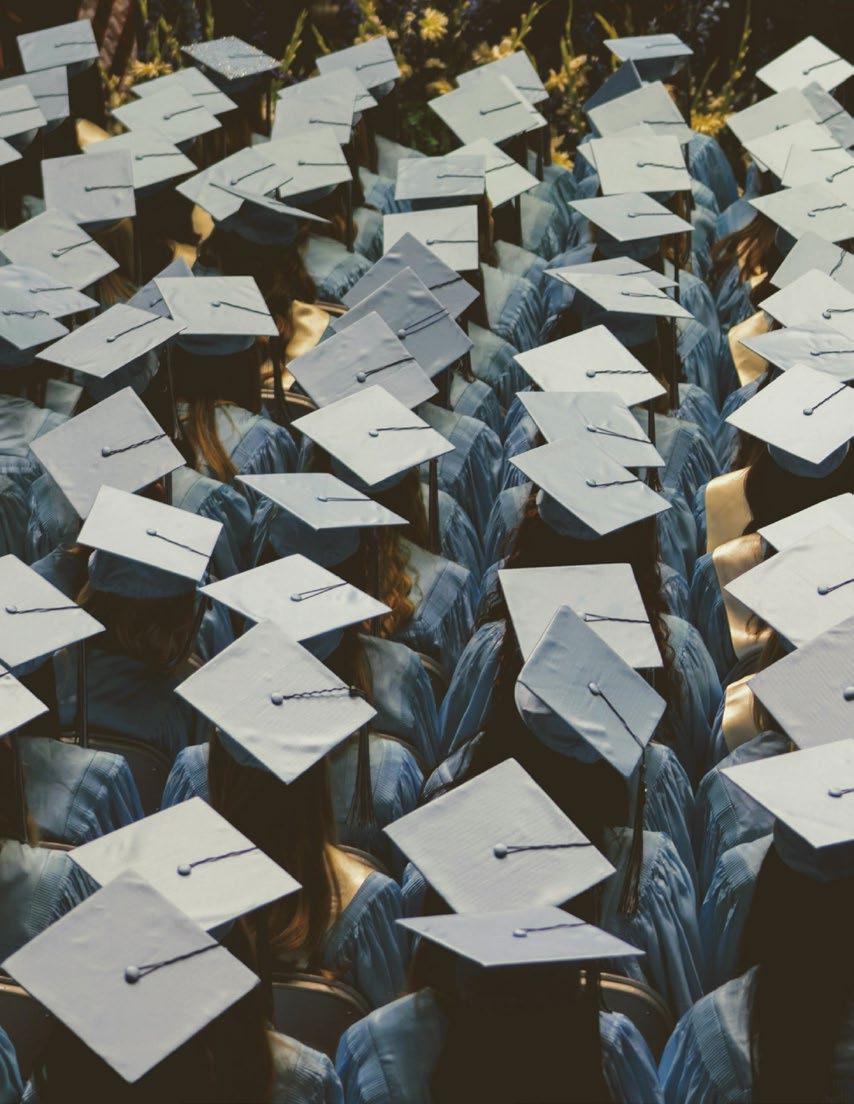

Creating intentional class cohorts can lead to better student persistence and outcomes, while also being the genesis of lifelong bonds. This approach can also create a secondary opportunity for connected alumni that re-engage institutions over time.
Snapshot
WHAT WE KNEW
Bonds forged in college can remain a person’s most durable connections.
WHAT’S HELD TRUE
Bonds developed in-person during personal growth tend to endure far better than virtual/ transactional ones.
WHAT WE NEED TO DO
We must holistically imagine the student experience as a way to intentionally build lifelong social/professional networks and develop robust mentoring skills.
OPPORTUNITIES VS. RISKS
This reinforces an institution’s value through network effects, but may further burden faculty with yet more teaching loads within and outside the classroom.
Make Human Connections
One consistent theme that panelists returned to throughout the discussions was their deeply-rooted belief that a college education is an opportunity for self-exploration and selfgrowth not just a “stepping stone” to a career.
As the prior sections of Learning Futures has explored, technological advancements have made learning from anywhere possible and
beneficial, but they can’t readily provide the serendipitous moments of learning, community, and connection that transpire outside the classroom. Such moments of connection are nearly impossible to replicate virtually and that’s likely to be the case for the foreseeable future. But how can the significance of these inperson chance encounters make them a broadly understood value?
“When we go digital... we forget there are other people having different experiences that can be valuable... [when people are together in-person] they’re actually gleaning lots of information... from each other about what is best for them... [and] I think there are some things that are going to be missing that we’re not going to realize until many years down the road.”
ERICA WOEKEL
These serendipitous moments are key building blocks for personal networks. Humans employ a wide range of non-verbal physical communication that are difficult to capture on camera. In-person experiences allow people to pick up on this fullrange of behavior, and foster connection across
diverse individuals. This is desirable for higher education institutions that aim to encourage new connections with peers, advisors, and mentors, which can help shape one’s life and career.
When considering types of networks that form across academic institutions, we’ve identified five types, each with their own characteristics that ebb-and-flow in relative importance depending on individual needs as well as topics of the day.
Social Contract Networks
From conduct and honor codes to sustainability goals, the notion of a “social contract” has long permeated many campuses. But it has often remained an abstract feature of campus life. 2020’s COVID-19 pandemic, however, has brought the idea of the social contract into a stark reality for on-campus communities seeking to limit the spread of infections and avoid sending students home early. After some halting starts over the fall of 2020, on-campus students, faculty, and staff at many institutions have begun to monitor themselves and each other through a shared commitment to behavioral expectations that embodied not just words or intentions, but actions.
The lasting impact of this experience of oncampus social contracts is yet to be seen. The implementation of these agreements will likely lead to some tension between greater community awareness and individual conceptions of autonomy and privilege. Perceptions of these contracts will also likely be influenced by whether a campus successfully managed to keep infections low, or if students were sent home. Regardless, a profoundly lived awareness of the social contract network has been raised. Future graduates are likely to take this perspective with
them out into the world. Faculty and staff may continue to weave these lessons into on-campus culture in the years to come after the pandemic has passed.
Cohort & Mentoring Networks
Cohort creation was a factor in the Learning Futures team’s considerations of balancing professional skills with the development of life skills. Cohorts come in many shapes and sizes, and can be geared beyond students to encompass faculty and staff. Some of the different types may include:
STUDENT COHORTS
There has long been a strong emphasis on incoming students and cohort building in higher education through the crafting of dynamic and cohesive first-year student experiences (FYE). The mutual crises of 2020 highlighted the need and effectiveness of such cohorts.
“One of the primary elements you want to provide for students is a way to belong to a cohort. Otherwise they’re lost and when they get lost or lonely, all kinds of bad things begin to happen to the program, to the individuals, [and] to your ability to teach.”
KIMO GRIGGS
One powerful story on the importance of being together as a physical cohort was shared by panelist James K. Ford. This fall, his team received requests from both domestic and international students requesting access to

physical spaces to ensure important cohort building activities could take place. These students clearly expressed their desire and need to be present in physical spaces to collaborate, learn, and take part in co-curricular activities together. They recognized that cohort building is vital to the undergraduate experience.
Given this importance, how can institutions carry on and leverage this for 2025? What does this mean for interprofessional education? Here are some ways institutions can continue cohort networks past the first year experience or COVID-19:
• Close attention has been paid to cohorts of similar academic programs through FYE programs and housing assignments based upon affinities. By keeping students together in small groups, a work/life cohort network can be actively encouraged past graduation.
• Mentorship programs that pair older. students with younger ones through a major, department, or area of interest can help
mentee-students navigate their academic careers, while also providing value leadership experience for mentors.
• Many colleges and universities already pair upper classmen and recent graduates with alumni further along in their careers. More energy on this front not only reinforces the life of the cohort network past school, but it also creates greater lifelong intersections between the institution and alumni.
FACULTY & STAFF COHORTS
To better support both teaching and researching, institutions could apply the social cohort techniques created as part of expanded faculty and staff training. Such support, paired with faculty-to-faculty and staff-to-staff mentoring programs, can help supercharge cross-institutional cohort networks. This can provide dividends for better on-boarding and institutional wayfinding, as well as create more durable connections to an institution’s Center for Teaching and Learning, or the Student and Academic Affairs platforms.
Knowledge Networks
Libraries have gone through a roller coaster of roles over the last two decades, shifting from content collection and study, to content wayfinding and application. Today’s library allows the librarian’s inner data scientist to flourish and leverage such skills across the academic enterprise putting the library firmly back at the heart of learning and innovation.
“There are significant steps being made in... figuring out how to make data count, how to cite data, and [how to] recognize the contributions that people are making in those venues.”
CHRIS SHAFFER
Driven by the need for better cross-campus collaboration, for student support and interdisciplinary research alike, many institutions are now expanding or redirecting investment in the library as a key element of their knowledge networks. By 2025, libraries may come to resemble learning “agoras,” marketplaces of ideas, support centers, training facilities, and providers of person-to-person connection across an institution’s human capital.
Social Justice Network
Along with COVID-19, 2020 also saw calls for social justice that resonated across campus communities. Colleges and universities are often bases for social justice activities, hosting events, movements, programs, speakers, and places for student expression. Only time will tell if 2020 proves to be a breakout moment where awareness of social injustice was finally broadly acknowledged and paired with a durable commitment to change and inclusion. As part of this year, particularly with activism having to balance physical visibility amidst COVID-19’s safety considerations, institutions have begun to ask themselves: what will civic engagement look like after 2020? How will virtual and physical engagement continue to inform each one another? How will this inform town/gown relationships?
Looking to 2025, campuses are likely to recommit to their social justice discourse. Ways that this might manifest include:
• Centralized, accessible, and identifiable oncampus areas that can be easily accessed to facilitate free speech.
• Mixed-media platforms for synchronous physical and virtual assembly.
• Enhanced connectivity of social justice networks with other on-campus networks and resources.
Wellness Networks
Wellness needs related to physical, mental, and social well-being have been increasing for a long time. 2020 has further highlighted the need to not only provide support from the administration, but to create more robust mutual health and wellness support networks across the campus community. As part of this, institutions could invest in “Wellness Advisors” for all students. Such individuals could engage in mental and emotional health, work/study/life balance, and reinforce that mindful self-care is central to academic success, not just a “nice to have.” Furthermore, Wellness Advisors could leverage other on-campus networks such as cohorts and mentoring mentioned above.
“It’s really important that campuses have psychological counseling and make it as accessible as possible, but it’s not the only tool and it doesn’t speak to all people. For obvious reasons there isn’t an infinite supply of counselors, and sometimes counseling isn’t the right fit for a student.”
EVIE KLEIN
Collectively, these five network-types can help create a social safety net that can robustly support and nurture the whole campus community, on-campus and beyond. Addressing issues of equity, diversity, and inclusion in each type of network identified must be considered if institutions of higher education in 2025 are to be more inclusive. Deeply integrating these principles into teaching and learning is critical establishing social justice as something that sits alongside the classroom experience is challenging, but can yield impactful outcomes.
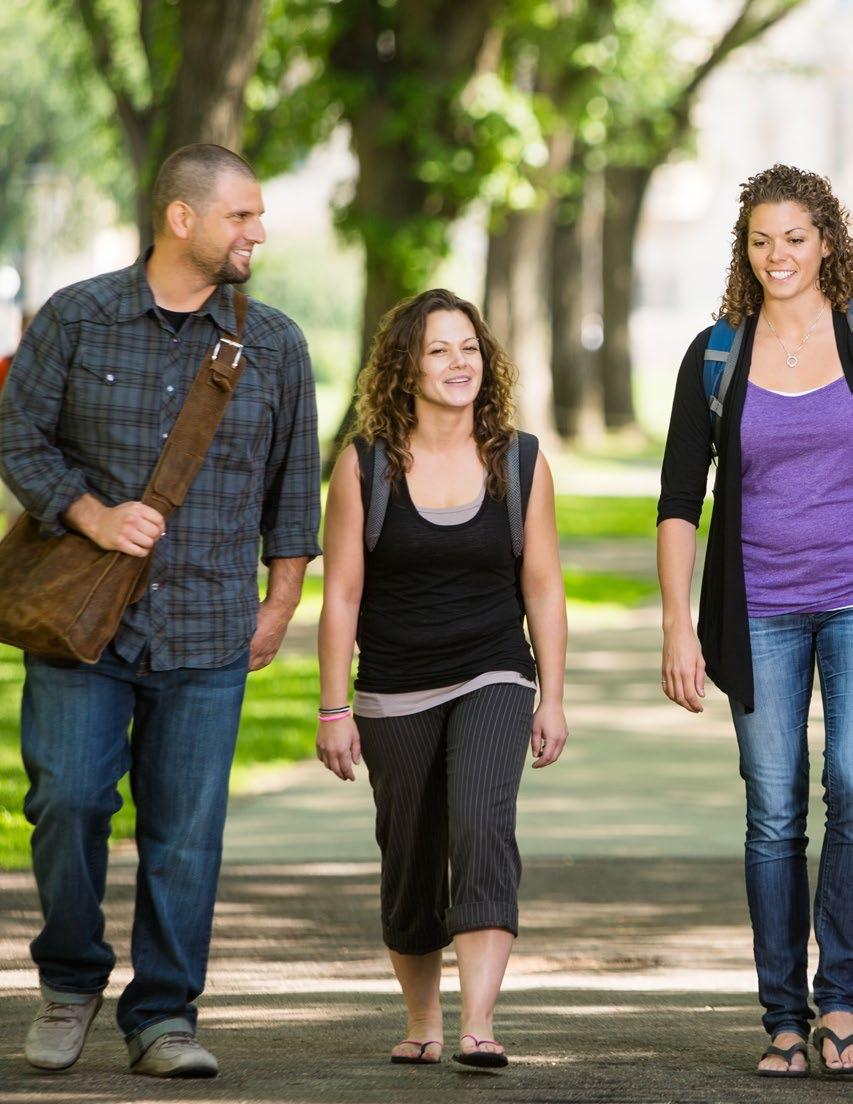

CAMPUS AS THE ESSENTIAL ECOSYSTEM
CAMPUS AS THE ESSENTIAL
The power of place to convene people has perhaps never been more evident. Post COVID-19, campuses will need facilities to transcend mere function and come together as a “place” and “hub” for impactful human connection.
Snapshot
WHAT WE KNEW
The value of the physical campus was facing doubts.
WHAT’S HELD TRUE
Students, faculty, and staff crave being together but not just for business as usual.
WHAT WE NEED TO DO
Campuses need to be conceived as integrated ecosystems of activity that are hubs for holistic lifelong learning.
OPPORTUNITIES VS. RISKS
Campuses that offer meaningful in-person experiences will increase institutional value, whereas campuses without a sense of place will miss out on providing that positive outcome.
The Physical Campus Will Flourish
COVID-19 has revealed how technology can extend teaching and learning beyond the physical campus. Concurrently, it has shown the limitations of technology, and crafted a value question: for a species with socialization at its core, isn’t in-person learning a fundamental pedagogical need? If so, and if the notion of pedagogy transcends syllabi and the classroom
to encompass life itself, can that mean that the campus is the most valuable learning platform available?
Higher education’s 2,000+ year history dating back to the Platonic Academy suggests the answer is not only an emphatic “yes,” but that the campus remains as resilient, adaptable, and essential as ever. Discourse on cities has gone through a similar arc. Predictions of a decentralized society have come and gone for years from the 19th century’s Garden City Movement, to the mid-20th century’s suburbanization, and 2020’s COVID-emptied business districts, theorists have incorrectly projected the end of a densely-clustered society. Higher education campuses, like cities, are likely to come back and to be more relevant than ever. The remote study and working isolation brought on across the world by the pandemic served as a stark reminder of our insatiable and somewhat paradoxical need to gather even if it means risking our health.
Our panelists were adamant on the long-term importance of the physical campus. They were also cognizant of its need to adapt to 2020’s lessons. The campus must:
• Be actively accessible to all (Section 1).
• Function as a holistic behavioral ecosystem (Sections 2 and 3).
• Undergird a series of human networks (Section 4).
“Getting groups of people that are different together and having them dialogue [through] tough conversations can be really helpful.”
ERIKA WOEKEL
Campus master plans already take into account a range of organizational and human activities. The planning of campuses in 2025 may go much further, examining and integrating behavioral psychology and environmental sociology. The physical campus will endure those that learn from this moment and pivot accordingly will be able to apply the lessons of 2020 and help their institutions flourish.
Campus as an Ecosystem
How can higher education communities pivot to grow from 2020’s lessons? A place to start is in thinking of the campus not as a collection of buildings and landscapes, but as a behavioral ecosystem. Understanding housing, classrooms, counseling centers, and athletic facilities as pieces of a unified ecosystem requires perspectives and tools that often transcend traditional administrative boundaries on campus. Yet to address the needs of students in 2025, it is precisely these connections across organizational and spatial boundaries that must be crossed.
Instructive precedents abound, but perhaps not from the obvious places. The worlds of hospitality and entertainment design with their extreme focus on user experience may offer key lessons:
• Resort design attempts to create an emotional state that is consciously removed from the day-to-day of the broader world.
• Entertainment design’s extensive branding seeks to create experiences powerful enough to gloss over uneven facilities.
• Hospitality training recognizes that staff are on the frontlines of guest experience, and it has many examples of how to reinforce mission on a daily basis.
Of course, higher education campuses are not resorts. But, like resorts, higher education campuses should be considered holistically as places that create a distinct experience for occupants. The following are ways to view campus as a learning ecosystem and identify gaps:

• Pedagogical ecosystems: How does the portfolio of classroom environments shape pedagogy? Institutions that already examine utilization, room size, and the spatial demands of their pedagogies should expand this kind of inquiry and act on the findings. Institutions that don’t do this must begin the process of looking critically at their classrooms.
• Social and study seating-type ecosystems: What’s active? What’s quiet? How does this change between the Student Union, the Library, and residential environments? At present, such studies are mainly focused on libraries, but libraries are just one kind of node within broader networks of knowledge and social exchange.
• Cohort ecosystems: Some campus environments clearly signal their intended use, while others can be co-opted for unintended functions. Mapping intended versus actual space use can provide invaluable information for crafting academic, affinity, and life experience cohorts.
Adapting Teaching Spaces
The campus of 2025 will continue to feature more innovative teaching spaces that push pedagogical concepts and allow for experimentation. Likely driven by experience design, such spaces will need to be more than just flexible they will need to be “hackable” and multi-modal. These spaces must be capable of readily supporting different types of pedagogies with minimal complexity and setup time. Furthermore, rather than be driven by technology, multimedia needs will likely serve as an adjunct support of the learning experience.
“Design with physical space and the syllabus [will evolve] into something that feels much more... like experience design.”
PARKE RHOADS
Beyond hackable multi-modal classrooms, other types of experimental learning environments may become commonplace.
• Maker spaces that serve as commons are likely to grow in significance. The University of Washington’s Global Innovation Exchange (GIX), which it developed in partnership with Microsoft, includes places for collaborative creativity at its center, rather than in a back room. Turning the maker space inside-out fosters greater engagement.
• Interprofessional simulation labs are also likely to both functionally and spatially expand beyond their current disciplinespecific roots. This will allow for expanded pedagogies and stronger networks across the academic enterprise.
• Incubator spaces can allow students and faculty to develop business ideas in an educational context, fostering stronger business connections to the university. Institutions can support entrepreneurial co-creation with generous terms for retaining intellectual property in exchange for the reinvestment of success back into the incubator.
• Lecture classrooms will be configured to “break down” into small group workspaces. With thoughtful lighting, plentiful writable surfaces, and movable furniture, the large lecture rooms that once supported the “sage on a stage” can be reconfigured into spaces that support teamwork through dynamic small group collaboration.

“Simulations let us... bring our training closer to the real world and... break down some of the silos that really cause health disparities and problems in healthcare.... [for example] nurses don’t know how to talk to doctors [who in turn] don’t know how to talk to pharmacists.”
CHRIS SHAFFERLooking towards 2025, our panelists recognized that the process of transforming teaching spaces will be incremental and iterative. The process will also need to be fully supported by the faculty and staff development platforms discussed in Section 3.
Adapting Workspace Usage
Like many employers, higher education institutions are wondering how many of their workers will come back to campus post COVID-19, and what work will look like for those that do return. At present, most institutions are expecting that significant numbers may remain remote indefinitely, but as mentioned in earlier sections, there can be hidden acculturating and retention risks to such efforts. As such, faculty and staffcentric space may change as much as studentcentric space. Some portion of workstations and private offices may be thought of as more sharable environments to allow for flexible oncampus and off-campus days. There will likely be more task-focused space for both focused heads-down work, as well as collaborative
brainstorming meetings. Higher education may look to workplace changes in the future to identify and incorporate solutions that support a workforce moving fluidly between on-campus and remote work.
“If a third of our staff start working from home... that reduces the impact on commuting, it allows us to recruit and retain staff in a way that we’ve never been able to do before, [and] it also opens up potentially a great deal of space that was being utilized by [an] individual worker in an individual office.”
JAMES K. FORD
Campus as “Place”
As our Learning Futures Project panelists considered the meaning of the campus as a place, several key themes emerged: the campus as a place for:
• Discourse and growth.
• The development of knowledge.
• Home and identity.
While the first two points have been much discussed elsewhere in this piece the idea of “home” and “identity” warrant further investigation as it speaks to how students, faculty, and staff build bonds not only across an institution but within their very idea of the institution itself.
“Campuses are home for students in a residential college. The students live there for nine months of the year and they may not have another place to go when the campus closes for many this is their only home.”
EVIE KLEINFor some, this shared sense of institutional identity enables new expressions of individualism, new ways to blend into communities, or opportunities to forge bonds through shared experience. This crafting of identity in that individuals “opt-in” to an institution as opposed to being assigned an identity based on their
background, remains one of the most powerful and impactful of life’s possible experiences. Such experiences have indelibly physical characteristics, both in the moment of experience, how they are framed through self-narrative, and how memories are consolidated through story-telling.
The definition of “place” is space imbued with meaning. A holistic approach to the higher education campus can provide an individual with the singular opportunity of “place” to craft selfidentity through the experience of a community of their choosing. Understanding who you were, deciding who you want to be, and learning how to go into the world and be that person may be the most powerful education possible.

ENDNOTES
1 Scott Carlson, “The Oddsmakers of the College Deathwatch,” The Chronicle of Higher Education, January 31, 2020, https://www.chronicle.com/article/the-oddsmakers-of-the-college-deathwatch/ James D Walsh, “The Coming Disruption,” New York Magazine, May 11, 2020, https://nymag.com/ intelligencer/2020/05/scott-galloway-future-of-college.html
2 “Immediate College Enrollment Rate,” National Center for Education Statistics, April 2020, https:// nces.ed.gov/programs/coe/indicator_cpa.asp
3 “4 Year Outcome as of August 2019”, NY State Graduation Rate Data, August 2019, https://data. nysed.gov/gradrate.php?state=yes&year=2019&districtneeds%5B%5D=1&cohortgroup=0 Taylor Swaak, “California’s graduation rate rises, but there’s no improvement in students’ eligibility for state universities,” LA School Report, November 26, 2018, http://laschoolreport.com/californiasgraduation-rate-rises-but-theres-no-improvement-in-getting-students-eligible-for-state-universities/
4 Hart Research Associates, “Raising The Bar: Employers’ Views On College Learning In The Wake of The Economic Downturn,” January 20, 2010, https://www.aacu.org/sites/default/files/files/LEAP/2009_ EmployerSurvey.pdf
5 D.school Overview. (n.d) retrieved from: https://dschool.stanford.edu/programs/teaching-learning
6 Daniel Tencer, “85% Of Jobs That Will Exist In 2030 Haven’t Been Invented Yet: Dell,” Huffington Post, July 14, 2017, https://www.huffingtonpost.ca/2017/07/14/85-of-jobs-that-will-exist-in-2030-haven-tbeen-invented-yet-d_a_23030098/
Copyright © 2020 by Perkins Eastman. All rights reserved
No part of this publication may be reproduced, stored in a retrieval system, or transmitted in any form or by any means, electronic, mechanical, photocopying, recording, scanning, or otherwise, except as permitted under Section 107 or 108 of the 1976 United States Copyright Act.
Limit of Liability/Disclaimer of Warranty: While the authors have used their best efforts in preparing this book, they make no representations or warranties with the respect to the accuracy or completeness of the contents of this book and specifically disclaim any implied warranties of merchantability or fitness for a particular purpose. No warranty may be created or extended by sales representatives or written sales materials. The advice and strategies contained herein may not be suitable for your situation. You should consult with a professional where appropriate. Neither the copyright holder no the author shall be liable for damages arising herefrom.
Recommendations contained herein are based on sources deemed reliable, including the CDC and OSHA. Perkins Eastman makes no guarantees, representations or warranties of any kind, expressed or implied, regarding the information, suggestions, or recommendations, including, but not limited to, warranties of content, accuracy and reliability. There is no guarantee that implementing these re-entry measures will decrease or eliminate the risks of spreading infectious disease and viruses. Each company’s plan for coming back to the workplace is at its own risk and must be tailored to its own discretion, criteria, values, tolerance of risk, and the needs of its staff, invitees and guests. The various requirements for re-entry plans will be dictated by federal, state, city and/or local level governments and each company will have to operate in compliance with applicable laws, codes, rules and regulations, and landlord requirements. Because requirements and guidelines are constantly changing, companies must monitor developments including developments in scientific studies, and consult with its legal counsel and insurance advisors for advice based on its own specific circumstances regarding office reentry plans.
PHOTO CREDITS: cover: Krissana Porto; page 27: Jessica da Rosa; page 28: Joshua Hoehne; page 37: Jeff Goldberg; page 39: Harshan Thomson; all other images purchased via
Adobe Stock.
d.levo@perkinseastman.com


Download here
www.perkinseastman.com
